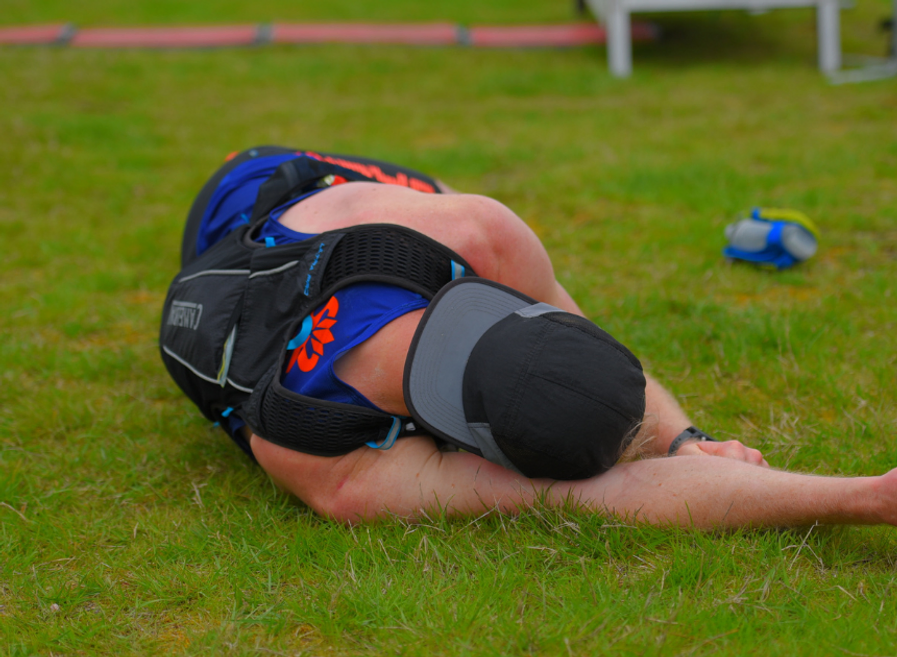Pacing in endurance sport is one of the most essential aspects of performance. Regardless of your ability, if you start the race beyond your level of fitness you will slow down at the end. The severity of how much you slow down (blow up) will depend on the race duration and how far beyond your ability you went at the start.
Heat and Glycogen: Two Factors Slowing You Down
In some cases, the amount you slow down may be so drastic you are forced to stop. Blowing up can occur for two reasons.
-
Heat:. You can only handle small variations in core temperature (97 °F (36.1 °C) to 99 °F (37.2 °C)). If you accumulate heat at a rate faster than your body can cool itself, you’ll be forced to slow down to avoid heat illness.
-
Sugar: As humans, we can only store a few 100 grams of glycogen (sugar) in our muscles and liver. We use glycogen aerobically and anaerobically as a high octane fuel for situations where fat can’t be used to produce energy fast enough. Starting too fast can use up your high octane fuel too quickly and again, you’ll be forced to slow down.
The longer the more important.
It shouldn’t come as a surprise that the longer your event is, the more important pacing is. In an ultramarathon taking 10 hrs or more, your potential to overpace at the beginning is high and the consequences can be drastic. Understandably, when you begin your A-race, you are fresh and ready to go, which makes the initial phase feel that much easier. However, going out even slightly too hard can have you losing minutes by the end. In the case of an ultramarathon or ironman, if you have to resort to walking, you can lose anywhere from 6–10 min per kilometre. Yet, simply by slowing down by 30 s–1 min per kilometre at the start, you would have been able to avoid your drastic demise.
How to avoid blowing up? Know your ability
If you know the physiological limits of your body, you will have a better idea of how hard (or easy) you can go at the start of your event to avoid blowing up. Here are some of the ways I use to gauge an athlete’s ability and determine their pacing strategy:
-
Time Trials: Knowing how fast you can cover a specified distance will give you an undeniable indication of your fitness level.
-
Power Test: On the bike (MTB or Road), you can get a very accurate gauge of your fitness by measuring your power output. Power is great for individualising pacing strategies too.
-
Previous Race Results: You can use previous race results to not only give yourself an honest gauge of your ability, but you can also use other athletes race results as a reference for an event you haven’t competed in before. If you know you’ve always finished near Steve in other events, you can look up his time from last year.
-
Heart Rate: If you know your heart rate zones, you can set upper limit for the start of the race to stop yourself going out too hard. When you know your max heart rate is 190 bpm and you’re at 175 bpm after 5 min, things may not end well.
Slow down—Just try it
My recommendation would be to start 10% slower than you normally would at your next low-key event or time trial. I bet you’ll be surprised at the result. Dr Matt Miller and I discussed this topic on our weekly Facebook live chat.
https://youtu.be/77SX9divAlk

Leave a Reply